Kyager
Video Presentation and Notes from the Composer | 視頻及作曲家的話
PerMagnus Lindborg and Loo Sze Wang (盧思泓)
中文版本︎

Introduction
KYAGER is about a mountain, a musician, and a robot. Every creative musician dreams of reaching the parnassum of his or her art: Jesus and Petrarca climbed mountains. Some musicians inspire, like Gepetto, Drosselmeyer, or Frankenstein, their ambitions into a robot. But with Loo Sze Wang, is it the robot Zaku that becomes more like its master, or the master that becomes more like the robot?
PerMagnus Lindborg, Loo Sze Wang, et al. (2021) :: live performance version for sheng, electronics, and video // fixed-media version [film].
Music composition, video direction, props, camera, and editing by PerMagnus Lindborg. Sheng performance, acting, and Zaku model by Loo Sze Wang. Additional music by Joyce Beetuan Koh. Camera and production assistance by Manni Chen. Produced by SOUNDISLANDS with support from City University of Hong Kong [StUp Grant #7200671] and Hong Kong New Music Ensemble.
Development Process
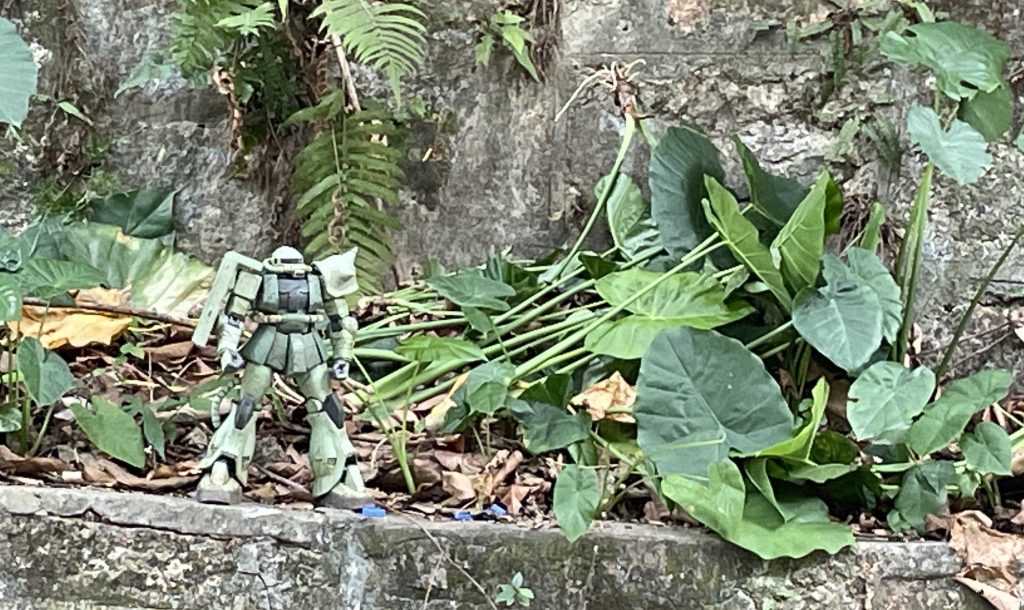
Since this ‘blog’ is stacking stuff from the bottom up, it presents the process in reverse chronological order. Here are some snapshots from the editing, mostly made in June, mostly done in Final Cut Pro, with additional video effects made with Max/Jitter. Field recordings are by me from Gwanaksan/Seoul and Tai Mo Shan/Hong Kong, the sheng samples are studio recordings of Loo’s playing – most of them treated in Max – and everything is put together in Logic Pro.

TWO STUDIES
MOUNTAIN GRAFFITI
I happened upon a spectacular venue while out trekking, and it became a sort-of study for the KYAGER film editing. No direct connection, but something about the atmosphere of the two works that link them together. let me know what you think of Mountain Graffiti.
GWANAKSAN
Part of the background to KYAGER is a short film of Gwanak ‘sharp head’ Mountain that I (PerMagnus) made while living in Korea. It is a based on Loo’s performance of compositional sketches by Joyce, recorded in Singapore in 2019, and PerMagnus playing percussion instruments, lithophones, constructed by Deborah Waugh (HKU Percussion Ensemble), and video footage captured on the mountain trails near Seoul National University. First shown at :MO:ving::vement:::tion::::.
SHOOTING DIARY
Snapshots from the location shoots in Hong Kong in April-May 2021, with Loo Sze Wang and assisted by my PhD student, Manni Chen.
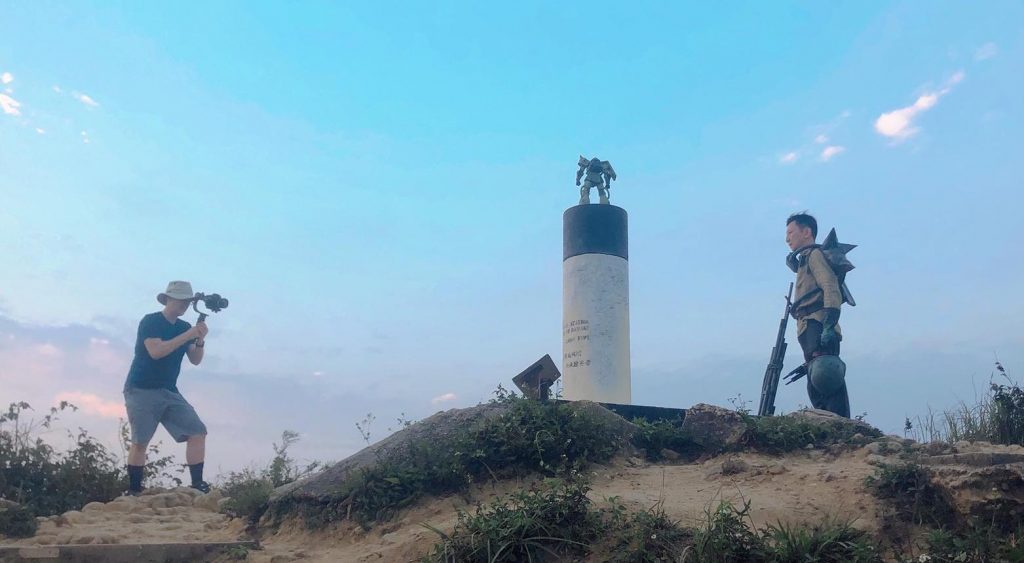


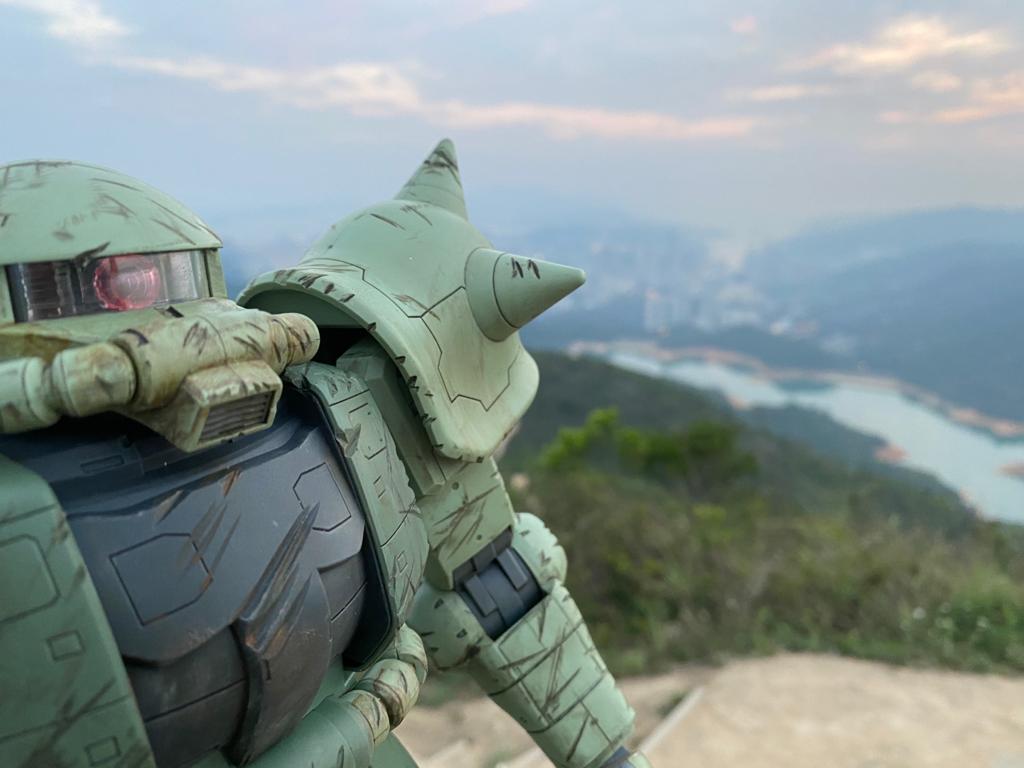
BUILDING AND FITTING THE PROPS

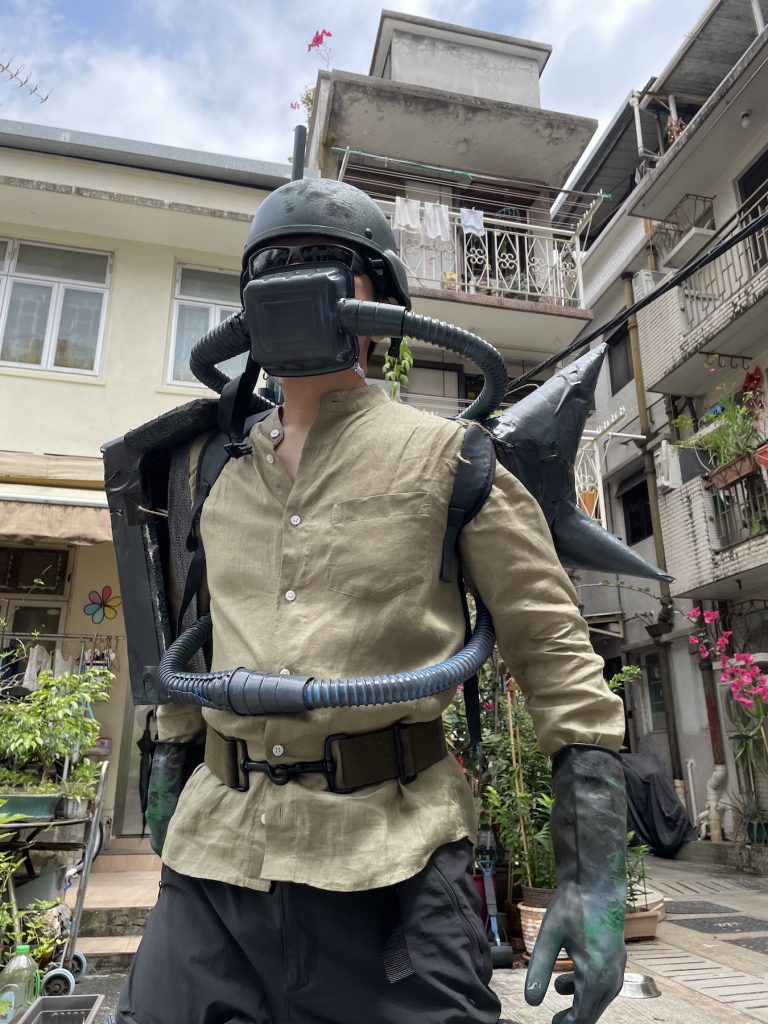
BUILDING ZAKU
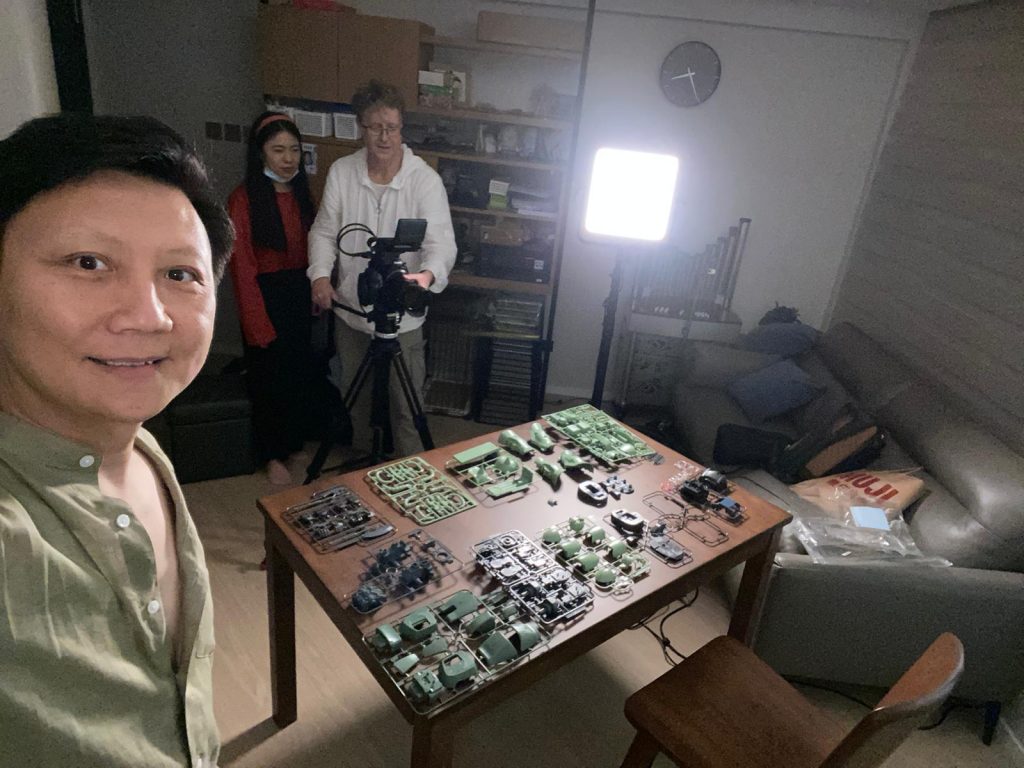
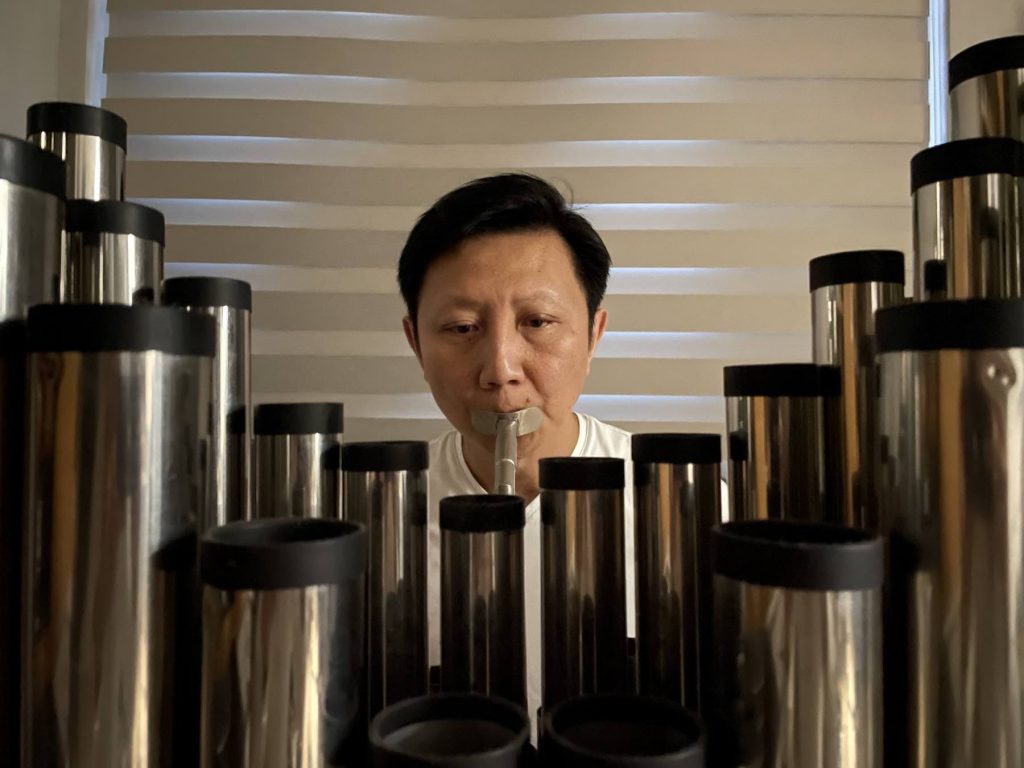
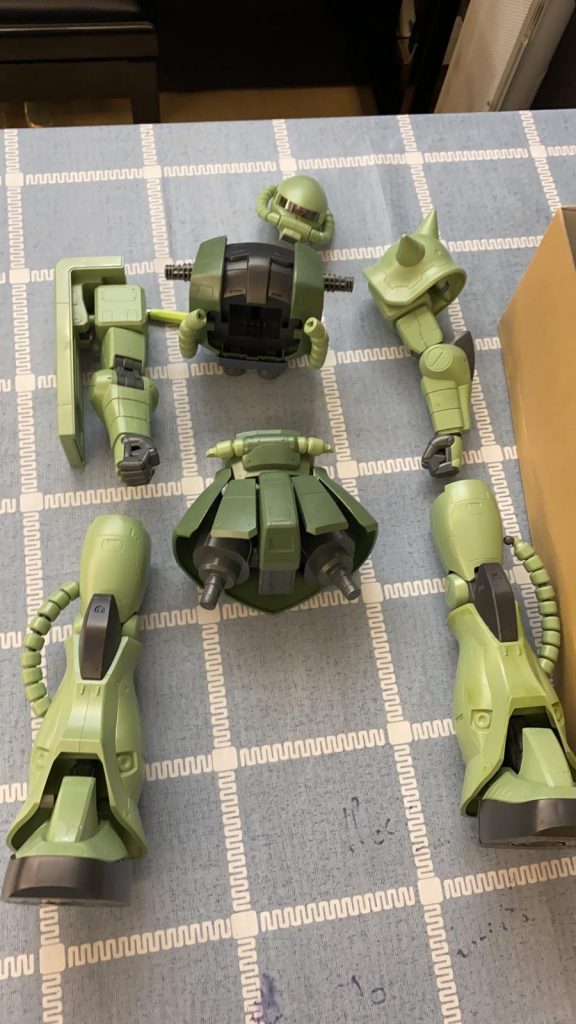
COMPOSITION


Biographies
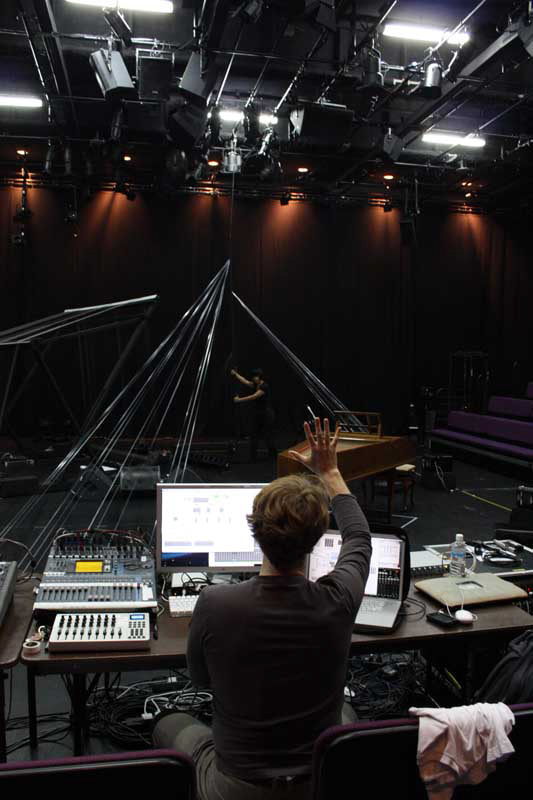
Dr PerMagnus Lindborg
Dr PerMagnus Lindborg is a composer whose research in sound perception and design is anchored in computer music. He explores cross-modal correspondences to enrich the science-art bond by applying empirical results in the design of artwork as well as extracting analytic data from sensory experiences. Significant output includes the ‘Locust Wrath’ series of climate data sonification installations, and the surround sound design for ‘Axis’, the world’s first dome-projected dance film.
He holds a PhD from KTH Royal Institute of Technology (Stockholm 2015) and has published in PLoS One, Leonardo, Applied Acoustics, Frontiers, Applied Sciences, IRCAM-Delatour, Springer-LNCS, and conference proceedings such as SMC, ICMC, ICMPC, and ICAD. Starting out as a pianist and composer (BMus Oslo 1995), he was an independent artist for ten years, while simultaneously pursuing studies in music computing (IRCAM Paris 1999) and contemporary musicology (DEA Paris 2003). From 2005 he has taught in higher education in France (École nationale de musique de CAPM), Singapore (Nanyang Technological University), and Korea (Seoul National University). He founded the Soundislands Festival (2013–17) and serves on the board of International Computer Music Association, as Music Coordinator and as Regional Director for Asia-Oceania. He is currently a Research Topic Editor for Frontiers Journal of Psychology on ‘human perception of environmental sound’.

Loo Sze-wang (photo by Sky Lip)
Prize-winning Loo Sze-wang is the foremost sheng (Chinese mouth-organ) player of his generation in Hong Kong. He has been active both as a soloist and as a chamber musician, having been featured several times at the Hong Kong Arts Festival, the contemporary music festival Musicarama and Radio Television Hong Kong. Since 1983, Loo has collaborated with different performing groups including the Song Company of Australia, Xenia Ensemble of Italy, St Lawrence String Quartet of the USA, POING of Norway, Het Collectif of Brussels, Hong Kong Sinfonietta and Macao Orchestra, performing in Argentina, Australia, Brazil, Canada, the USA, Japan, Taiwan, Germany, Singapore, Korea and China.
Loo premiered several sheng concertos including Miroir de Macao by Lam Bun-ching, Hark the Phoenix Soaring High and ‘Twas the Thawing Wind by Chan Hing-yan. In 2009, he was Artist-in-Residence of Cornell University, New York and gave a solo performance with Fulcrum Point New Music Project at Northwestern University, Chicago. In 2012/2013, Loo was appointed as Artist Associate of Hong Kong Sinfonietta and toured with the orchestra in North America. Recent highlights included the performances in Chan Hing-yan’s chamber opera Heart of Coral in Taipei (Hong Kong Week 2014), Law Wing-fai’s music theatre When Petals Fall in Serenity, Samson Young’s The Anatomy of Musician in Paris in 2015, world première of Chan Hing-yan’s Hark the Phoenix Solitaire Cry with Orchestra UniMi in Milan under the baton of Yip Wing-sie in 2016, and the 2017 Hong Kong Arts Festival production of Hong Kong Odyssey.
As a founding member of Chinese Music Virtuosi, a six-member Chinese instrumental ensemble that performs new and traditional works, Loo has performed at Garden Festival in Warsaw, Melbourne Festival, Singapore Arts Festival, Buenos Aires International Music Festival, Hong Kong New Vision Arts Festival, and Chinese Composers’ Festival, among others. The group also commissioned over a dozen new works, which include works that score for both Chinese and Western instruments. It was appointed as the Ensemble-in-Residence of the Chinese University of Hong Kong (CUHK) in 2011/2012.
A graduate of CUHK and The Hong Kong Academy for Performing Arts, Loo’s sheng teachers included Chen De-ren and Cheng Tak-wai. He had also taken flute lessons from Timothy Wilson and Chan Kwok-chiu.
